Role of Viniculture in Ethiopian History
One of the earliest mention of grapes can be found in the 13th century Ethiopian law book Fetha Nägäst, also known as the Laws of the Kings, which serves as the foundation of Ethiopian Law. This text declared that wine for the Eucharist ceremony or the Holy Communion should be made from “the juice of pure grapes”, and “not be replaced by any intoxicating drink prepared with the help of fire”
The Ethiopian Orthodox Church required wine for the all-important Eucharist ceremonies, but this demand for wine was met by the availability of raisins – in many cases imported from abroad – which proved to be more convenient for wine-making than using fresh grapes. Viniculture, or the process of growing grapes for making wine, has a long history in Ethiopia, dating back to at least early Aksumite times.
It is possible that production was disrupted in the early 16th century due to the attempted conquest of the country by the Muslim conqueror Ahmäd ibn Ibrahim, although this has not been definitively established. Most of the country’s grapevines appear to have been destroyed by the grape pest phylloxera in the second half of the century.
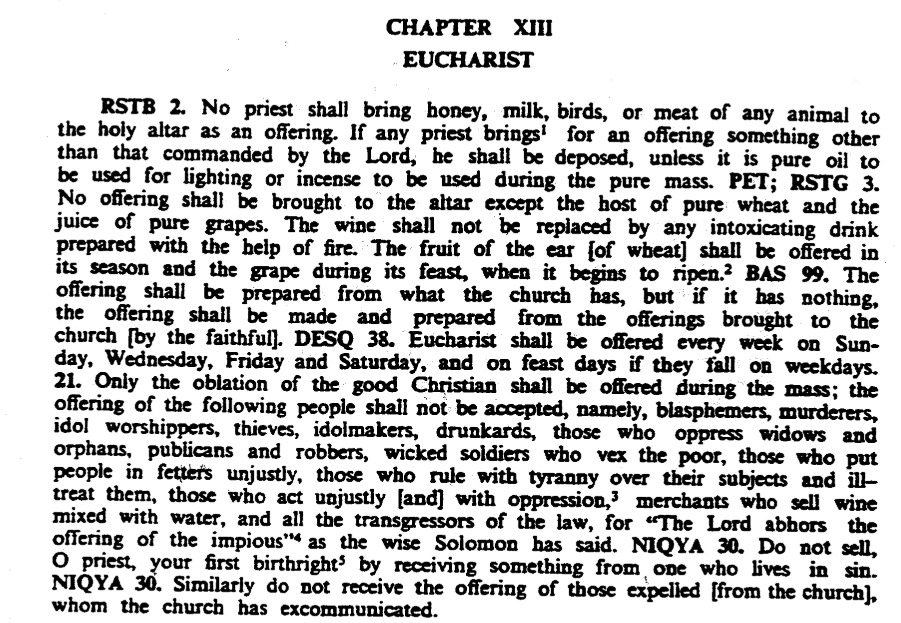
Chapter from Fetha Nägäst; Source: ethiopianorthodox.org
Legacy of grapes and wines in ancient egypt
The ancient Egyptians never cultivated wild grapes, but they managed to build a successful wine industry in the Nile Delta around the third Dynasty which was around 2700 BC. Grapes were a staple food in ancient Egypt, enjoyed fresh, dried, or turned into wine. They were used in various dishes, including baked goods and beverages.
Egyptian tombs, including that of Pharaoh Tutankhamun, contain records of grape and wine. Egyptians also imported superior wine from Greece, which they mixed with water. Wine was linked to Osiris, the god of the afterlife, and the life-giving forces of the Nile’s red sediments.
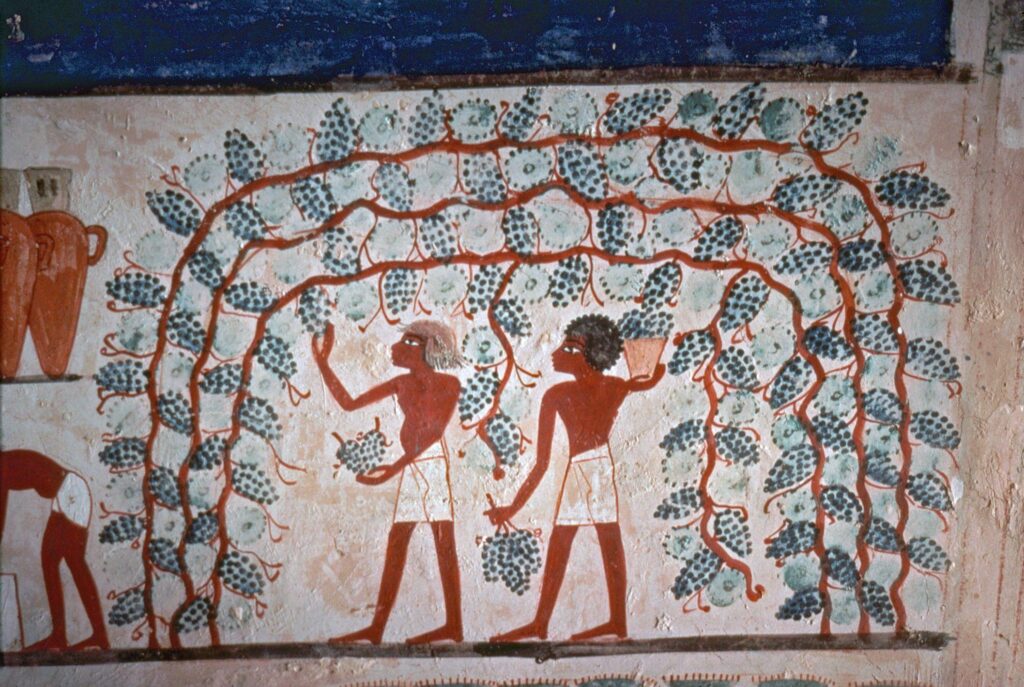
Scenes of harvesting grapes in Tomb of Nakht; Source: jstor.org
Grapes of ancient palestine
In ancient Palestine, grapes were a vital part of daily life, deeply woven into the fabric of agricultural and social customs. The vineyards, filled with the lush, green vines, became bustling hubs of activity, especially during the harvest season.
Entire families, from grandparents to children, participated in the grape harvest, transforming it into a communal celebration. As the harvest began, families would migrate to their vineyards, setting up temporary homes in huts constructed from branches and rushes. These makeshift dwellings, known as QASR, provided a temporary yet essential home for the weeks of the grape-gathering season. The entire landscape buzzed with the sounds of laughter, singing, and the rhythmic clinking of harvesting tools.
The grape harvest in ancient Palestine wasn’t just about gathering fruit; it was a time of intense social bonding and cultural preservation. Traditional songs, proverbs, and stories were shared, teaching the younger generation about their heritage and the significance of the vines that sustained them.
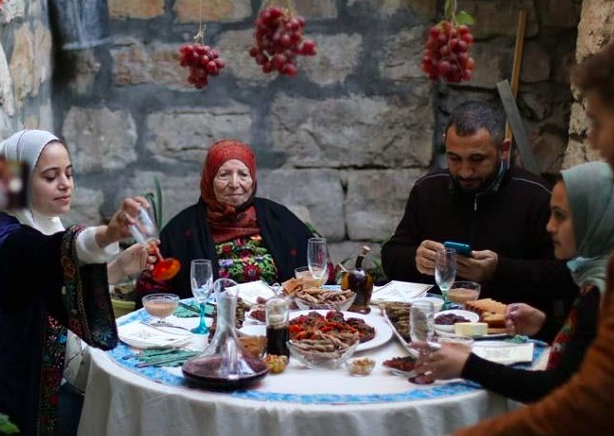
Palestinian villages celebrating grape harvest; Source: wearenotnumbers.org
Biblical Significance of grapes and wines
In the Bible and all ancient Hebrew writings, grapevines are called as “gefen” originating apparently from the word “kafan” meaning to bend and curl, in reference to vine stems and tendrils.
It is said in the Genesis that after the Great Flood, Noah planted a vineyard. This act is significant as the vine is mentioned in Deuteronomy as one of the plants in the promised land of Israel.
In the New Testament, Jesus referred to himself as the true vine, highlighting his connection to God. He performed his first miracle by turning water into wine at a wedding in Cana. At the Last Supper, Jesus shared bread and wine with his disciples, representing his body and blood. He instructed them to continue this practice in remembrance of him.
Overall, grapes and vineyards hold deep significance in the Bible, representing generosity, divine connection, and the sacrifice of Jesus.

Painting of the last supper (1557-1564); Source: jstor.org
Medieval Wine and Society
In the Middle Ages, grapes and wine held great importance, both in terms of their economic and social impact. Wine served not only as a beverage but also as a medicine, while grapes were considered both cleansing and nutritious.
During the medieval period, people believed that the gods resided within the grapes they harvested and the wines they consumed. Wine allowed them to transcend their everyday lives and commune with these deities.
However, as Christianity gained influence, the Christian church began to restrict the use of sacred wine and differentiate it from secular wine. It was common for priests, monks, friars, and nuns of the Catholic Church to be the primary suppliers of wine to the masses during that period. From the fall of the Roman Empire until the Renaissance, Church workers not only provided wine to the average European but also played a crucial role in selecting and spreading high-quality grape varieties. Kings and feudal lords of the medieval period also had vineyards and made wine, but they often donated large portions of land to the Church for vineyard use.
Peasants and workers from the lower classes used to consume wine that had been stored in animal hides. Unfortunately, this practice resulted in the wine acquiring a terrible taste, resembling vinegar. Despite its unappealing flavour, this wine was still considered more hygienic than drinking pure water. They even included wine with their breakfast!
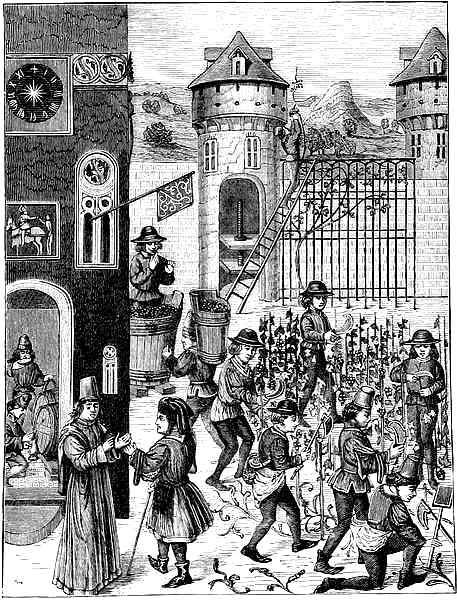
Grape gathering and wine cultivation in 15th century; Source: A history of champagne (1882)
OLDEST WINE IN THE WORLD FOUND INSIDE A 2,000-YEAR-OLD ROMAN TOMB
Did you know that a liquid has been discovered in the tomb of Carmona, Spain, which is believed to be the oldest wine in the world? The wine found inside the funerary urn was white in colour.
Click here for more info: Journal of Archaeological Science
Grapes of Canaan
In the painting “Grapes of Canaan,” the renowned French painter James Tissot expertly portrays the biblical account of the spies dispatched by Moses to survey the land of Canaan. These scouts returned with a magnificent cluster of grapes as evidence of the land’s fertility.
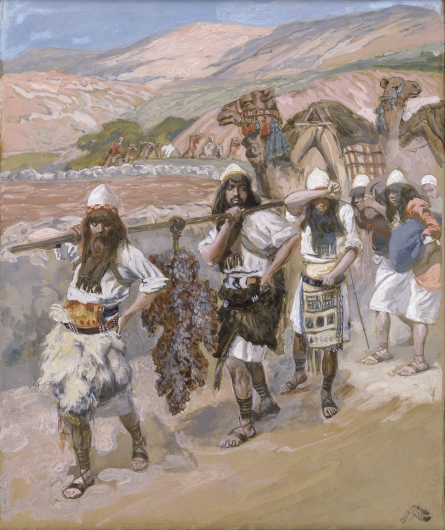
Grapes of Canaan (1896 -1902) by James Tissot; Source: wikiart.org
The Goophered Grapevine
The Goophered Grapevine, written by Charles Chesnutt and published in 1887, is a short story included in his collection The Conjure Woman. This collection delves into the themes of race, folklore, and the supernatural in South America after the Civil War.
The story is significant for its use of African American vernacular and its early depiction of African American folklore in American literature. Chesnutt uses the frame narrative and the character of Uncle Julius to give voice to African American experiences and cultural traditions in a period of significant social change.

Source: pixabay.com
POTENTIAL MEDICINAL BENEFITS OF grapes
Grapes are rich in bioactive compounds such as anthocyanins, flavanols, and phenolic acids, which offer a wide range of health benefits. Studies reveal that consuming grapes may decrease the risk of developing chronic conditions such as cancer, diabetes, hypertension, and heart disease.
The French Paradox is an observation that suggests that French people have a lower risk of coronary heart disease, despite consuming a diet high in saturated fats. This phenomenon is often linked to their regular consumption of red wine, which is believed to offer protection against heart issues. While wine plays a significant role in the French Paradox, it’s likely a combination of factors such as diet, lifestyle, and genetics that contribute to their lower rates of heart disease. Resveratrol is naturally occurring compound found in grape skin and wine is believed to provide the heart-protective properties. Research also indicates that wine consumption may be linked to a reduced risk of cardiovascular disease and mortality.
However, it’s essential to remember that resveratrol isn’t a cure-all for health improvement. Consulting a healthcare professional about alcohol consumption is always advisable, and it is important to remember that moderation is key.
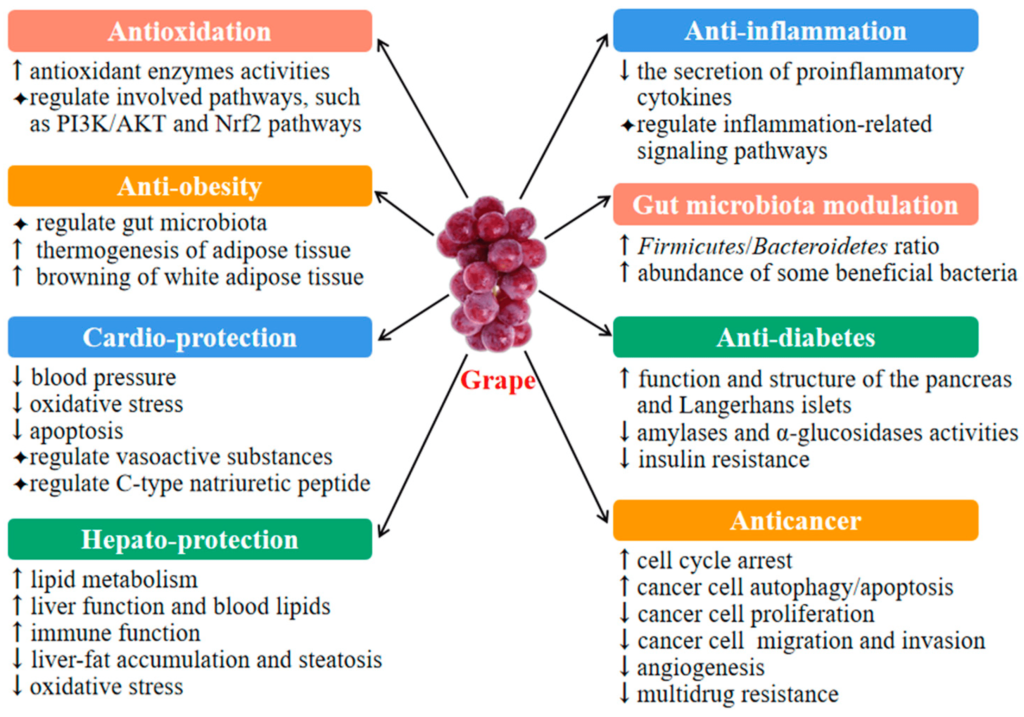
Potential health benefits of grapes; Source: Zhou et al., 2022
References:
- Pankhurst, Richard. “The History of Grapes, Vineyards and Wine in Ethiopia, Prior to the Italian Invasion.” Journal of Ethiopian Studies 39, no. 1/2 (2006): 35–54. http://www.jstor.org/stable/41966169.
- McGovern, P. E. (1998). Wine for Eternity. Archaeology, 51(4), 28–34. http://www.jstor.org/stable/41771405
- Canaan, T., 2005. Plant-lore in Palestinian superstition. Jerusalem Quarterly, (24).
- Asaph Goor. “The History of the Grape-Vine in the Holy Land.” Economic Botany 20, no. 1 (1966): 46–64. http://www.jstor.org/stable/4252702.
- https://www.chabad.org/
- https://www.gutenberg.org/ebooks/11666
- https://www.vinetowinecircle.com/en/history/the-late-middle-ages-and-the-renaissance/
- Zhou, D.D., Li, J., Xiong, R.G., Saimaiti, A., Huang, S.Y., Wu, S.X., Yang, Z.J., Shang, A., Zhao, C.N., Gan, R.Y. and Li, H.B., 2022. Bioactive compounds, health benefits and food applications of grape. Foods, 11(18), p.2755.
- Sabra, A., Netticadan, T. and Wijekoon, C., 2021. Grape bioactive molecules, and the potential health benefits in reducing the risk of heart diseases. Food Chemistry: X, 12, p.100149.
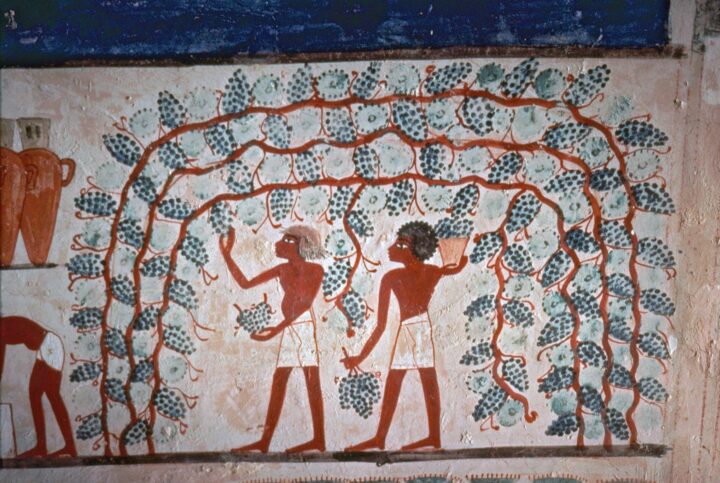
Leave a Reply